
Rediscovering Japan

Rediscovering Japan
Travel (Tomioka (Gunma)/Ogawa (Saitama))

by tomizuta
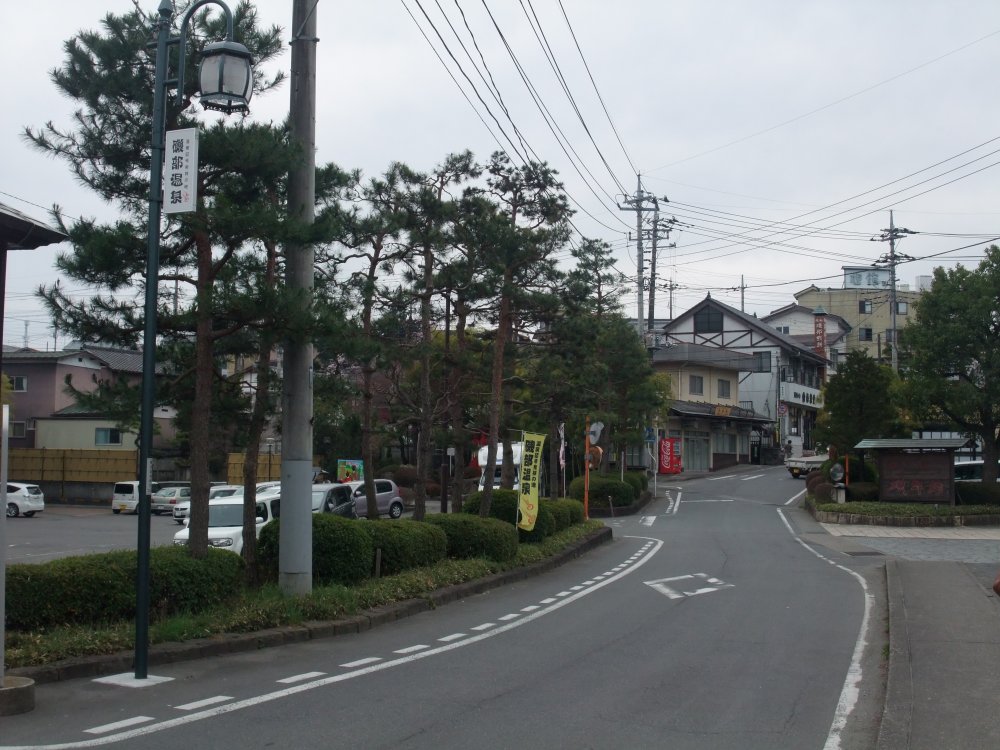
At Isobe Onsen. Gunma has numerous onsens.
There is a popular annual TV drama series, Taiga Drama by NHK that is aired every Sunday for 45 minutes from 8pm. Each series is fiction based on historical characters and events. The heroine in the 2015 series was Fumi Yoshida, younger sister of Shouin Yoshida from Hagi (in Yamaguchi prefecture). Her elder brother Shouin was executed by the Tokugawa military government for his aggressive attitude towards the government, and her first husband, Genzui Kusaka died in battle with the supporters of the Tokugawa government towards the end of the Edo era. Fumi remarried Motohiko Katori, also from Hagi, who later became the first governor of Gunma prefecture. Gunma attracted a lot of attention from the series as well as the designation of Tomioka Silk Mill as a World Heritage site in June 2014.
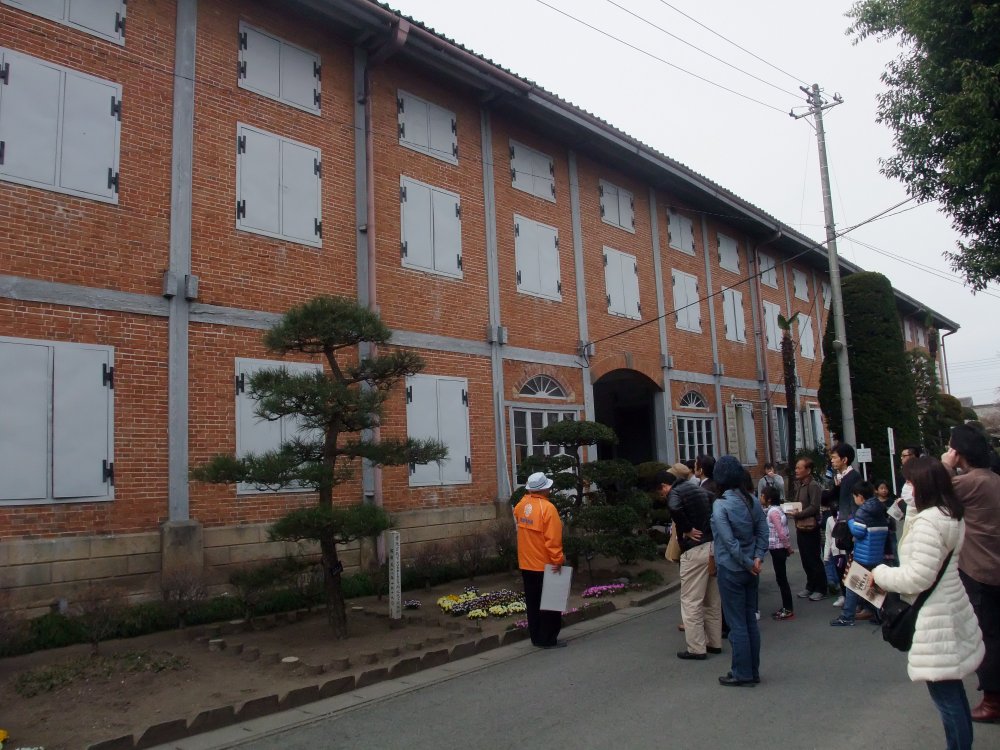
We joined a guided tour of Tomioka Silk Mill
Tomioka Silk Mill has a very informative web site (with English version). Suffice it to say that at the start of the Meiji era (1868-1912), silk was Japanfs largest export, the new Meiji government initiated many government owned model factories in its attempt to modernize Japan and catch up to the Western world, and Tomioka Silk Mill was one of the earliest such attempt. Katori contributed a lot to raise and standardize the quality and increase volume for export. It struggled profitwise in the early years, and Katori played a key role to convince the government to continue the mill.
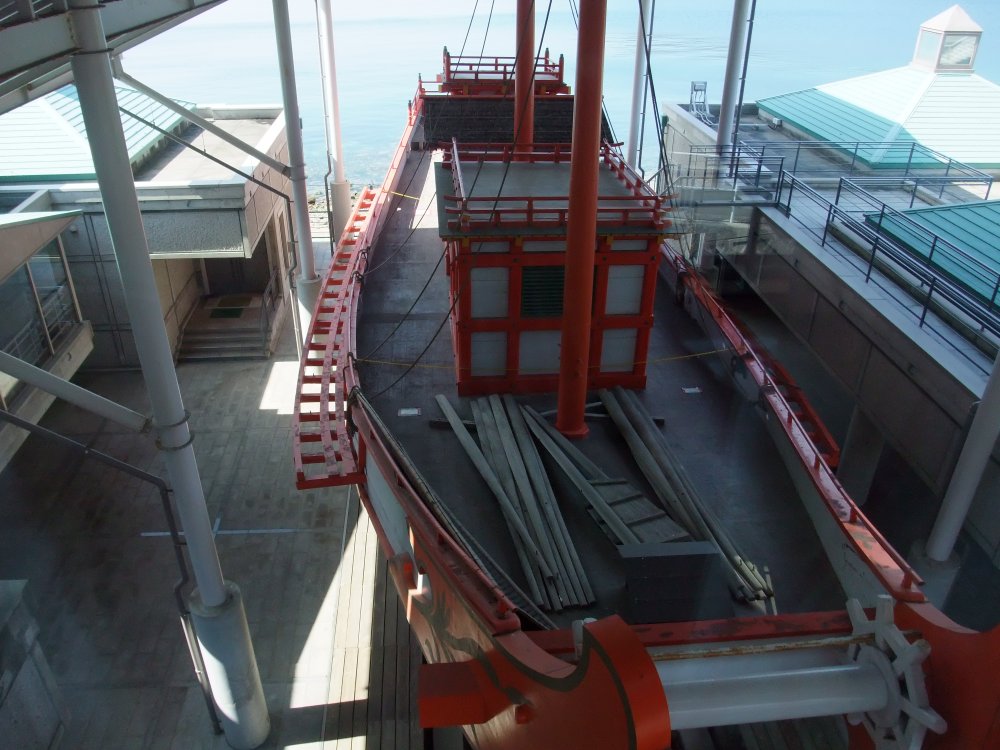
Replica of Kentousen in a museum in Kurahashi, Kure City. Japan sent boats to Tang dynasty China periodically from the 7th to 9th century to import Chinese culture.
I think it is fair to say that Japan as a nation is very capable in importing new culture, then digesting and developing it into a new Japanese culture. We sent missions to ancient China from the 6th century AD, brought back Buddhism that developed into Japanese Buddhism. Pottery was imported from Korea in the same period and spread out Japan. Ceramics, the same in the 16th century which developed in Arita or Imari. Zen was introduced from China in the late 12th century, which led to tea ceremonies and Kaiseki cuisine amongst others. And in the Meiji era, we imported western culture and blended it with our own. French knowhow was imported for Tomioka.
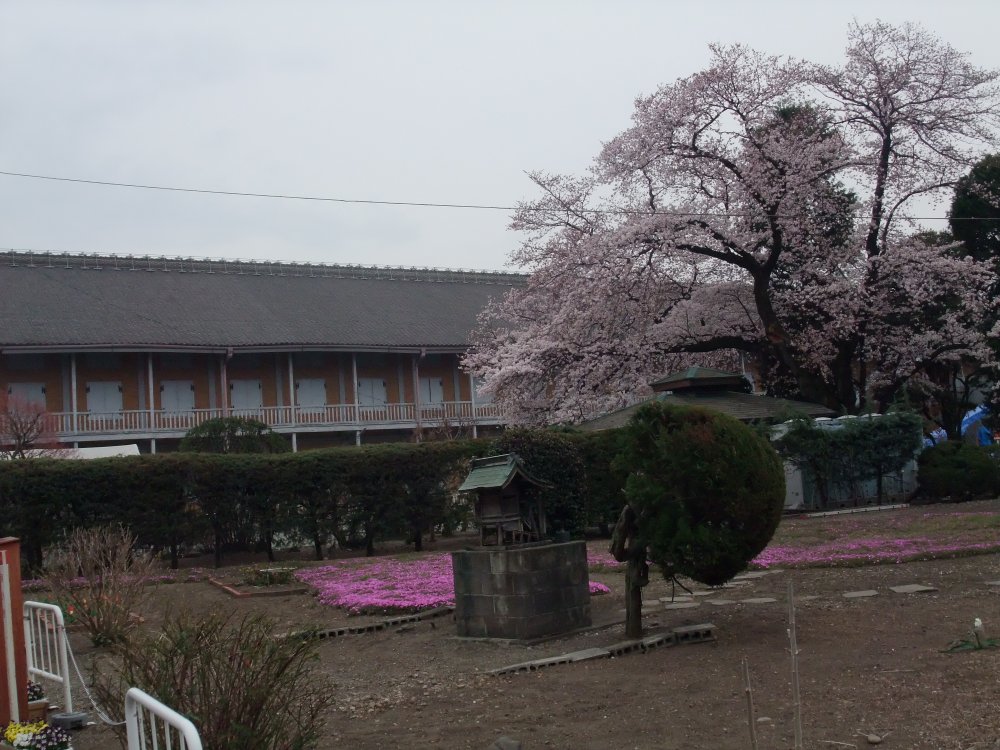
The cherry blossoms were in full bloom. The pretty pink flowers are called shibazakura although of course they are a completely different species.
The cherry blossoms were in full bloom when we visited Tomioka. There are many species of cherry blossoms. The most common is a species called Someiyoshino. This is what you see in most cities. Cherry blossoms in the mountains are generally called YAMAZAKURA (mountain cherry blossoms). These species grow naturally in the mountains. They tend to be scattered and can be taller in height. Gunma is famous for its mountains and numerous onsens. The yamazakura in the mountains on this visit was equally picturesque.
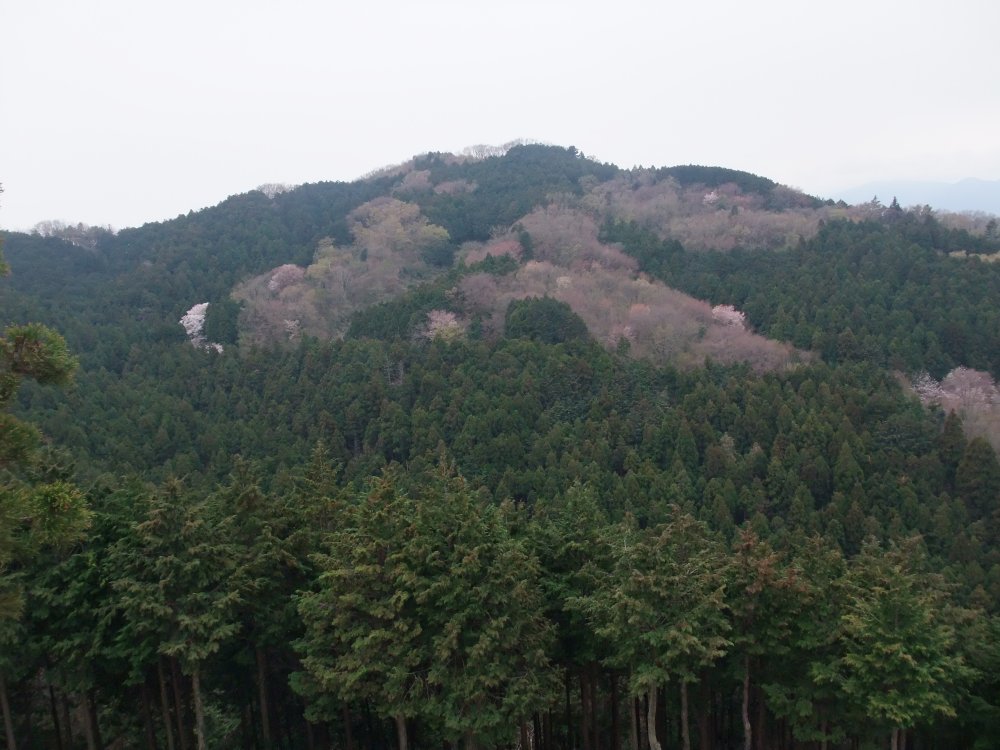
Note the YAMAZAKURA in the mountains.
We stayed at an onsen hotel called gSuzume no oyadoh Isobe Garden in Isobe Onsen, about 10 miles north of Tomioka. Isobe Onsen is a typical onsen village with many onsen ryokans (hotels). Isobe Garden was a large and modern hotel than one would expect for an onsen ryokan. Suzume no oyado, meaning sparrowfs nest comes from the folk lore shitakiri suzume (tongue cut sparrow).
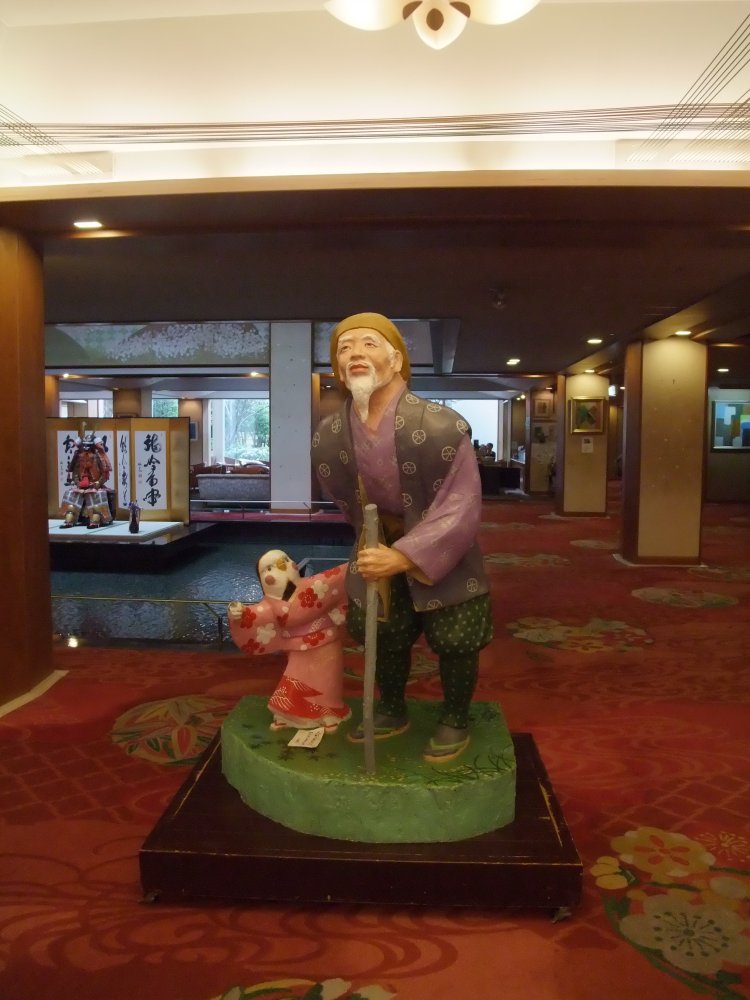
The old man and the sparrow in the ryokan lobby
The story is that once upon a time, there lived an elderly couple. The husband was a very kind person. One day he found a wounded sparrow in the woods. He took the sparrow home and treated its wounds. The sparrow refused to return to the woods, and stayed with the husband. The husband was very fond of the sparrow. One day, the sparrow ate some rice made glue. The wife was annoyed and cut off the sparrowfs tongue in the absence of the husband and kicked the sparrow out of their house. The husband felt sorry for the poor sparrow and went into the woods to find the sparrow. He found the sparrow in a suzume no oyado to which he was invited to come into. The sparrow expressed its gratitude to the husband for treating it so kindly. He was offered a huge meal, and offered a gift to take back. gHere are two gift boxes, a large one and a small one. Take one home as our gift.h The husband replied gI am old and weak, so I will take the smaller one.h When he opened the box at home, he found it full of gold and gems. The greedy wife asked gWhy on earth did you not ask for the larger box?h She went to the suzume no yado, was given a huge meal and asked to select the gift. She chose the larger box. But when she opened the box, out came worms and snakes. The folk lore is not unique of Gunma but spread out through Japan with many variants. There was a shrine in the hotel grounds named Shitakiri Shrine.
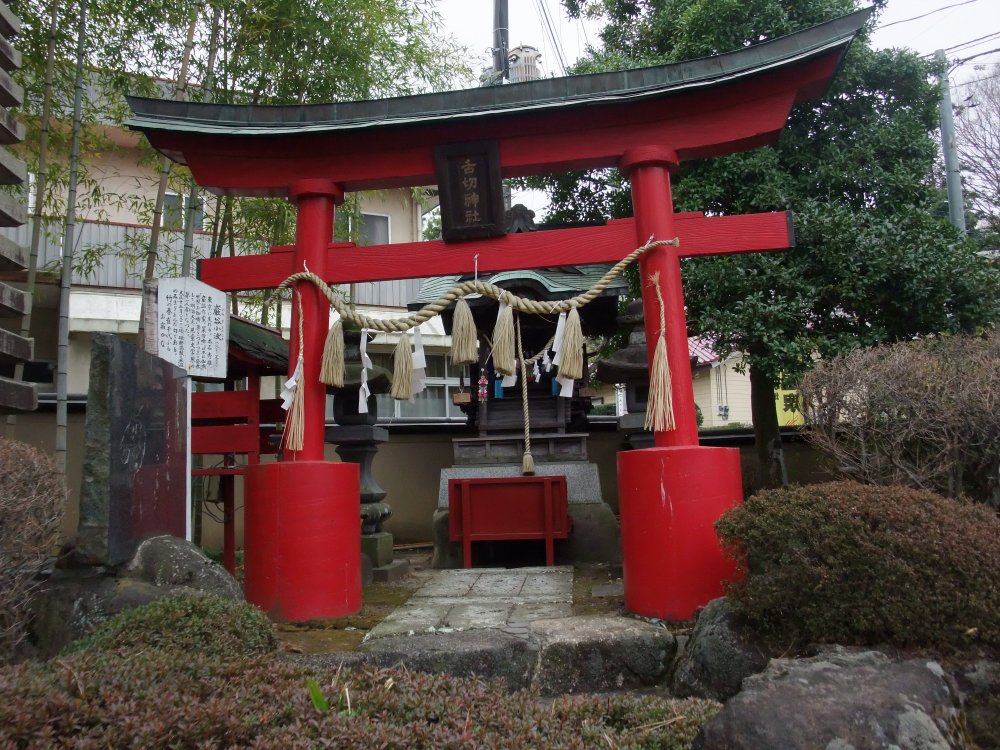
Shitakiri Shrine in the ryokan car park
Close to Tomioka is the city of Annaka. Taiga Drama in 2014 was gThe cherry
blossoms of Yaeh. The time period of the drama was the same as in 2015,
late Edo to early Meiji. Yae married Joe Niijima. Niijima was from Annaka.
He smuggled himself into the US, and was converted to Christianity. He
was one of the earliest Meiji Christians, after the Christian ban was lifted
in early Meiji. He later founded Doushisha University in Kyoto as a Christian
university. His house from the Edo period is open to the public. We visited
the house as well as Annaka Church, the first Christian church founded
by a Japanese where Joe baptized 30 people.
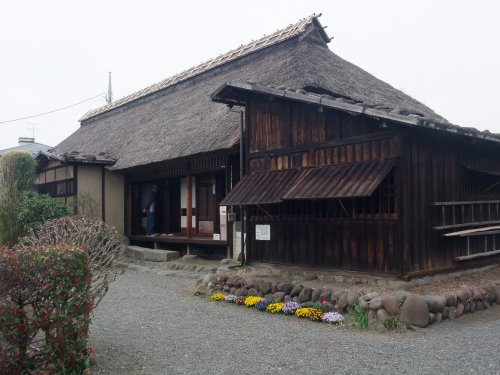
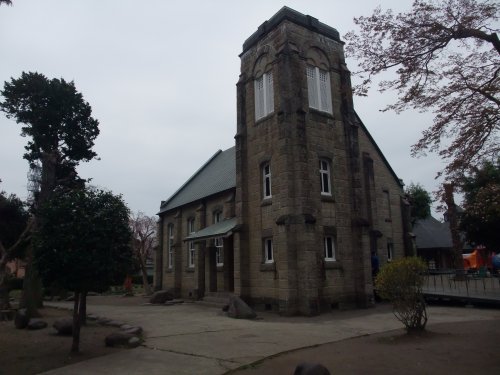
Joe Niijima's house (left) and Annaka Church (right)
We visited the town of Ogawa in Saitama, as it was on our way back to Chiba. There are some towns around Japan that are called Little Kyoto (shou-Kyoto). In order to qualify as a Little Kyoto, a town must have scenery similar to Kyoto (typically, a river, historical buildings, many temples and shrines), classic art and industry and some relationship with Kyoto. Ogawa is called the Little Kyoto of Musashi (the old name for the larger region), and is particularly famous for its handmade Japanese paper (Hosokawa wasi). We had lunch and visited a sake brewery in the city center.
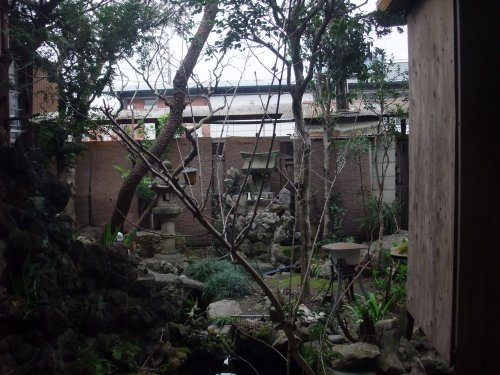
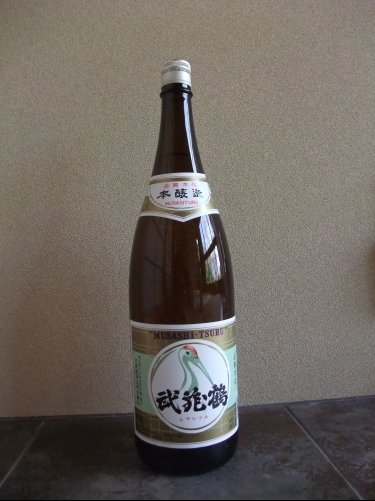
The back garden of the restaurant in Ogawa (left) and a 1.8 litre bottle of Musashitsuru honjouzou brewed in Ogawa